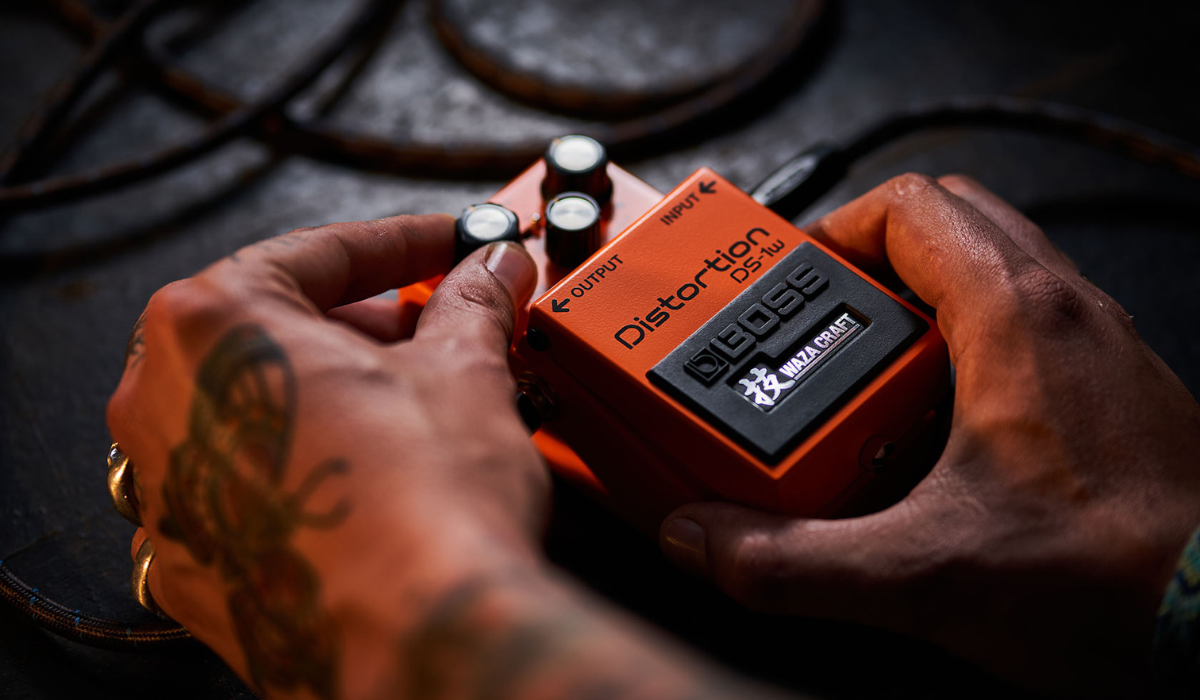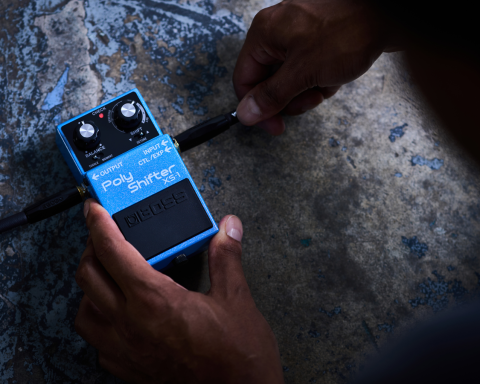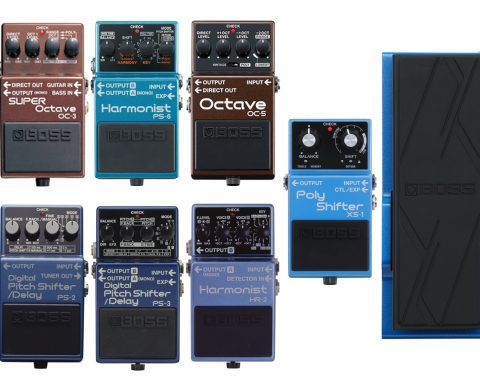Distortion is one of the world’s most-used effects, and BOSS makes a wide range of pedals in this effects category. The simplicity, reliability, and consistent, usable tone of the DS-1 has earned it a place on countless pedalboards worldwide since its 1978 debut. And it’s not the only BOSS distortion pedal to become legendary in its field. The MT-2, minted in 1991, remains an industry standard for thick, aggressive drive tone. In addition, the HM-2 shaped an entire genre of heavy metal with its “Swedish Chainsaw” tone. The pedal remains revered by guitarists for its extraordinary aggressiveness.
How Distortion Pedals Work
While distortion serves a similar function to overdrive, it is a different beast. Unlike overdrive, distortion creates signal clipping within the effect rather than relying on amp gain. It applies saturation and compression, creating a thicker, driven tone at lower volumes. Distortion is more consistent and less reliant on amplifier pairing to create high-gain tones.
Distortion Applications
Distortion can be a lot of fun, it can be versatile, it’s usable in a lot of different genres, and it can be vital in shaping a go-to guitar tone. Still, there are a lot of differences between distortion pedals, so it’s essential to know which application one is planning to use it for to choose the right pedal.
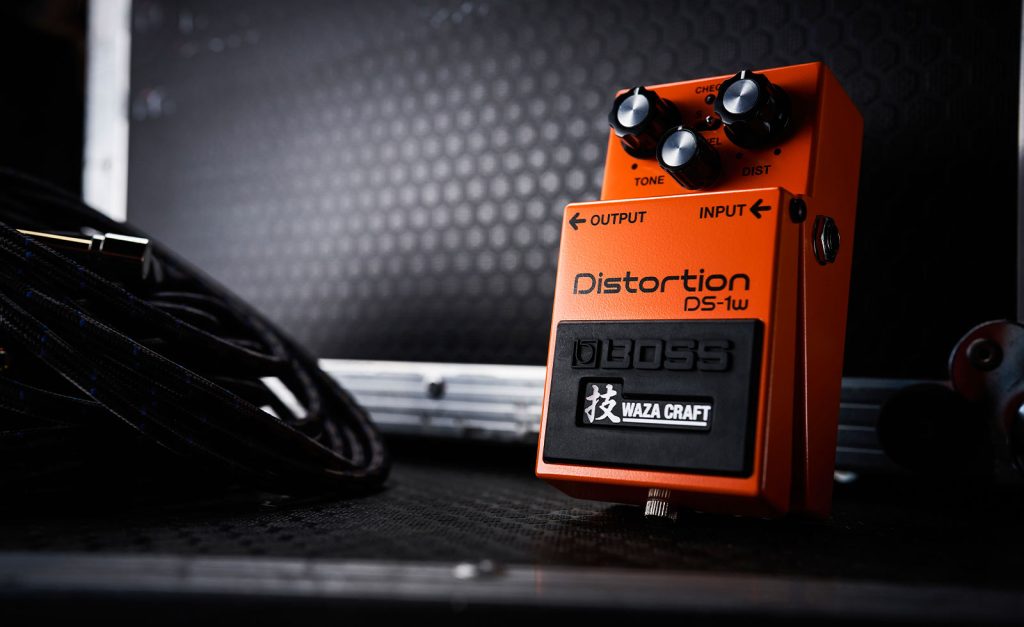
Distortion can be a wild and unruly beast. It can produce very different results than other effects depending on the equipment. Amplifiers, guitar pickups, other pedals on a pedalboard, and even a guitar’s tuning can impact how a distortion pedal reacts. Understanding how to tailor a distortion pedal to a setup is integral to getting the most out of the pedal.
AMPS AND GUITARS
Tube Amps
The type of amplifier a player uses with their distortion pedal can significantly impact the pedal’s tone. Tube amplifiers tend to be very reactive to overdrives and distortions, saturating and modifying the tone of any gain pedal running into it.
Tube amps with medium or high gain settings don’t require as much heavy lifting from the distortion pedal to achieve an aggressive, saturated tone. The pedal can subtly blend in with the amplifier’s overdrive. In this instance, the distortion pedal’s EQ can get used more aggressively to help shape the desired distorted tone.

Clean Amps
In this case, a distortion pedal would create a thick, full-bodied drive tone by further pushing its gain capabilities. The pedal becomes an amp-in-a-box, transforming the amplifier’s tone into something wholly different and relying only on the amp for volume. Limp Bizkit’s Wes Borland is an excellent example of this. He pairs the crystalline tones of a Roland Jazz Chorus with menacing distortion that allows him to shape his tone at his feet.
"Humbucking pickups with a higher output will produce the fullest, thickest results from a distortion pedal."
Guitars and Pickups
Pickups have a considerable impact on how a distortion pedal reacts. Humbucking pickups with a higher output will produce the fullest, thickest results from a distortion pedal. A single coil-equipped guitar, like a Telecaster, will be thinner sounding, have a more nasal tone, and require more gain and a low-end boost from the distortion pedal. This isn’t necessarily a negative—often, a thinner, piercing sound is desirable. It’s all personal preference.
FIVE DISTORTION PEDAL USES
1. Use Distortion as an Exciter
Distortion pedals don’t always need to get cranked to sound great. Running a distortion at a low gain setting into the front of a driven amplifier can be a great way to get some gorgeous fuzzy drive tones—rich in harmonics and sustain. The moderate gain from the distortion pedal pushes and collapses the preamp of a tube amp, creating some unique overtones and a rich, organic-sounding breakup. An exciter is perfect for an occasional tone thickener or always on as a tone backbone.
"The moderate gain from the distortion pedal pushes and collapses the preamp of a tube amp, creating unique overtones and organic-sounding breakup."
2. A Tone Shaper
Often on overdrive pedals, the EQ control is a subtle shaping tool. However, some distortion pedals, like the HM-2W, MT-2, MD-2, and ST-2, are designed with comprehensive, dynamic EQ controls. Using these types of pedals, a guitarist can manipulate the EQ controls to create defining tonal changes. This type of power can be beneficial for shaping a distorted tone in a mix with precision, ensuring the correct frequencies get boosted or cut to enhance the music.
3. With Other Instruments
Overdrive pedals create drive by boosting the guitar’s signal to clip the waveform’s peaks. By contrast, distortion pedals produce a saturated layer of distortion, altering your tone rather than enhancing it. Overdrive relies on the amplifier and instrument with which it’s paired. While that is still the case with the distortion, it’s far more independent, making it highly versatile and usable in far more situations.
Their comprehensive EQ controls and ability to distort any signal running through the pedal make them well-suited for use with other instruments. Bass guitars and synthesizers can also utilize distortion to great effect. Pedals like the HM-2W and MD-2 offer vast amounts of low-end, making great multi-instrument tools for creating sonic mayhem.
"Bass guitars and synthesizers can also utilize distortion to great effect."
4. Push the Pedal to Its Limits
Distortion pedals are aggressive devices designed primarily for heavy rock and metal. While some distortions excel at moderate settings, never be afraid to push a pedal to the edge.
This method was popular in the late ’80s when a genre of Scandinavian heavy metal used the BOSS HM-2 to create the Swedish Chainsaw sound. These distortion fiends turned every rotary control on the pedal fully clockwise, maximizing the pedal’s capabilities. The result was a punishing guitar tone that countless metal guitarists still emulate today.
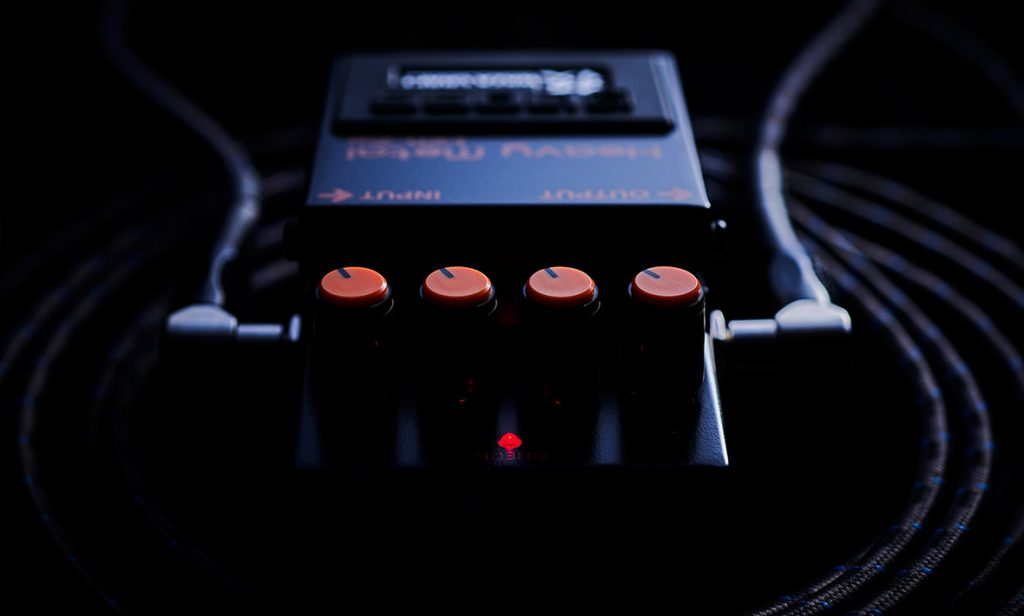
5. Distortion as Channel Switcher
One of the most valuable things about distortion pedals is how much gain they can produce. It’s an ideal choice partnered with a clean amplifier and used as a channel switcher. With a single-channel amp, a distortion pedal can provide much boost and gain, allowing your amplifier to work as a clean pedal platform.
Distortion pedals with comprehensive EQ controls, such as the MT-2 or HM-2W, will allow players to shape their distorted tone into something completely different from their clean tone. This application is perfect for making the most of an amp’s natural tone while retaining a crushing heaviness.
"Pedals with comprehensive EQ controls, like the MT-2 or HM-2W, will allow players to shape their distorted tone into something completely different from their clean tone."
Crunch Time
Ultimately there’s a distortion pedal for every type of player. From the crushing MT-2 to the tasteful DS-1, distortion can shape a sound more than almost any effect. Distortion is fun for experimentation and developing unique tones. At the same time, the effect can form the backbone of a guitar sound, even defining entire genres. One of the most satisfying things about these pedals is their innate versatility. No matter the style, there is the perfect distortion awaiting discovery.

